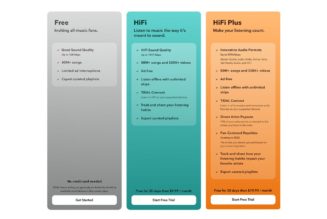
In the ever-evolving world, strategic communication is playing a pivotal role in several arenas. With the emergence of Artificial Intelligence (AI) and social media as a channel of communication, strategic communication is revolutionising and reshaping how messages are formulated, distributed and the impact they have on their targeted audiences.
In Kenya, where digital movements like #RejectFinanceBill have shown the power of strategically communicating to your target audience, the integration of AI and social media platforms is contributing to how messages are crafted, delivered, and received.
AI, though not a new phenomenon contrary to public opinion, simply put is the use of human intelligence by computer systems. AI technologies range from machine learning to natural language processing that help understand and respond to prompts. Strategic communication is about carefully crafting meaningful messages and aligning them to the goals of an organisation.
According to Shannon Bowen, strategic communication has the power to define issues, create understanding, envision solutions and implement policy at organisational and public policy levels.
In the new dawn of strategic communication, data-driven insights, audience analysis and personalisation, and content creation and distribution are the key ingredients for the integration of AI and strategic communication.
The recent #RejectFinanceBill movement, led predominantly by Gen Z, showed the importance of strategic communication in mobilising and influencing public opinion. Gen Z have leveraged the power of social media platforms such as X and TikTok to build a grassroots movement and voice their opposition on the proposed financial legislation.
AI tools played a critical role in analysing public sentiment, identifying key influencers from different generations, and amplifying the movement’s messages. This represents a reversal of the traditional agenda-setting process, where the public, in this case Gen Z, have dictated and continue to dictate the news agenda.
The ability for Gen Z to quickly influence public reaction and opinion and adapt communication strategies amplifies the power of AI-enhanced strategic communication. The intersection of AI, social media and strategic communication is like an orchestra between humans and machines that must be in harmony.
Data-driven analysis, insights
Measuring the effectiveness of communication strategies especially in real time is a game changer. AI has enabled this to happen using advanced analytical capabilities where immediate feedback is possible.
This assists in making informed decisions, modifying strategies and optimising the outcomes. Using AI to suggest communication objectives and measure audience behaviour, preference and trends across traditional and new media channels can provide actionable insights for meaningful change.
This iterative process ensures communication strategies are practical, impactful and evolve based on target audiences’ expectations.
Audience analysis, personalisation
Understanding your target audience preferences, behaviour and expectations is important for successful engagement. One of the advantages of AI in strategic communication is the ability to deliver personalised content. AI can analyse big datasets and offer insights into audience dynamics. With this information, one can ensure the messages resonate with the audience.
According to Mccrindle.com, 48 percent of Gen Z use TikTok, 46 percent Instagram, and 42 percent YouTube. Their ideal leader is a collaborator, their influence advise is based on forums, and they use social media for their communication.
Streamlining content creation using AI powered tools is one way to optimise its timing and distribution. The content needs to be well written in the right format and distributed to the targeted audience using the appropriate channels, which AI can do.
The content needs to be well written in the right format and distributed to the targeted audience using the appropriate channels. AI can do all the above and ensure maximum engagement and impact. In strategic communication, messaging effectiveness and efficiency are crucial.
For instance, during the #RejectFinanceBill protests, AI could have been used to disseminate information more efficiently on various social media platforms and mainstream media, ensuring widespread awareness and strategic participation from different parts of the country and the world.
The #RejectFinanceBill movement highlights how strategic communication, powered by AI and social media as the communication channel, can drive significant social and political change.
Caroline Kiarie is an Assistant Professor- Strategic Communication, Aga Khan University Graduate School of Media and Communications









